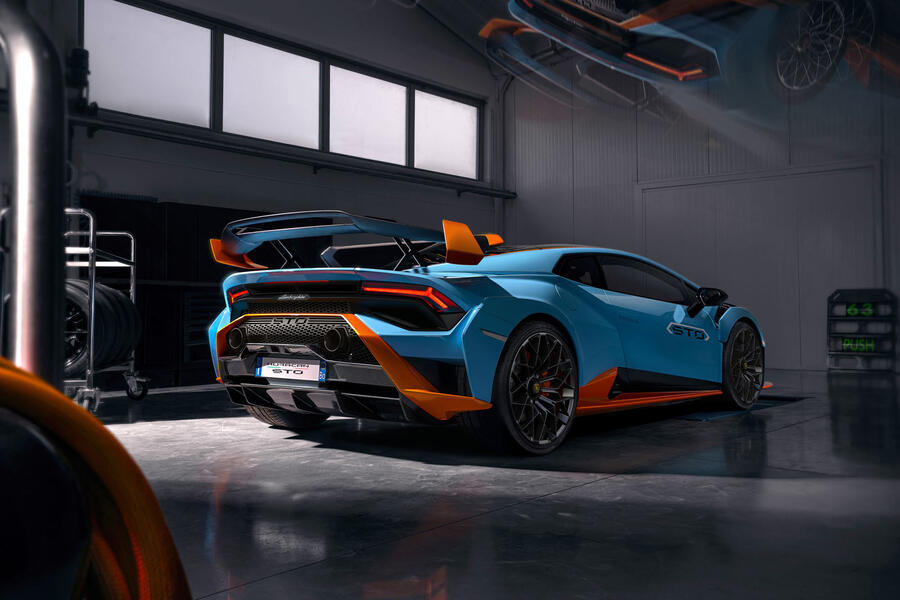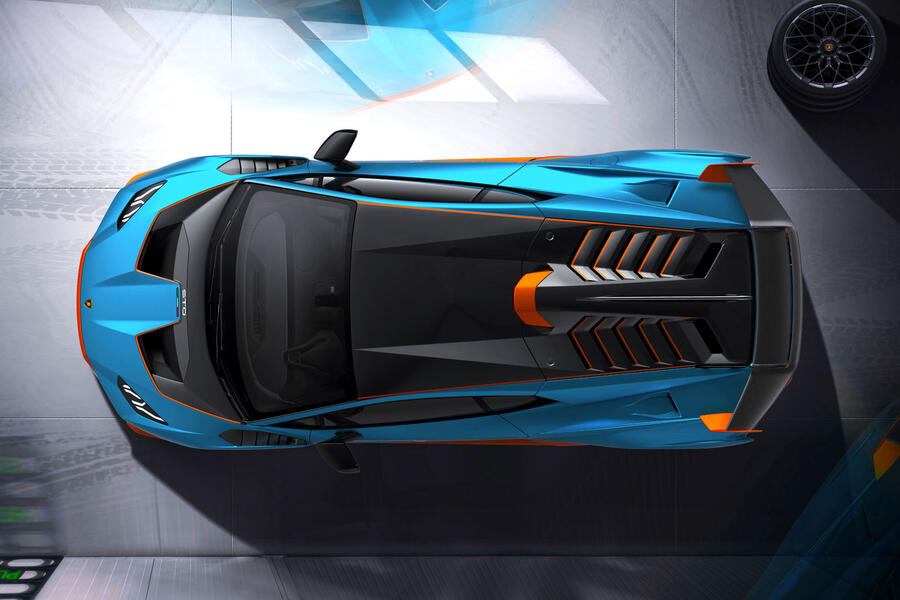Lamborghini's new Huracán STO is the most track-focused version yet of the Italian brand's smallest model.
Said to draw inspiration and technical learnings from the Huracán Super Trofeo Evo and successful GT3 racing models, the STO (which stands from Super Trofeo Omologata) is effectively a road-homologated version of the racer that won the 24 Hours of Daytona three times.
"The concept of the project was in what way can we capitalise on all this [racing] know-how, all this experience, and create something that is missing in the portfolio of the Huracán family," Lamborghini's head of R&D, Maurizio Reggiani, told Autocar. "It is a car that can be dedicated to track activity in a puristic way."
Sitting above the Huracán Performante, the STO has power from its naturally aspirated V10 pegged at 631bhp - exactly the same as its sibling. However, it's 43kg lighter than the Performante, thanks mostly to the removal of the four-wheel drive system, but also due to the use of carbonfibre for 75% of the car's body panels.
Notably, the rear wings use a carbon 'sandwich' formation, using 25% less carbon material while maintaining the same rigidity. There are magnesium wheels, too, and even the windscreen is 20% lighter than the Performante's.

But there's far more to the STO than just lighter weight. As its race-bred bodywork suggests, aerodynamics play a core role. Reggiani said "extensive" wind tunnel work has helped the car "have the right balance in terms of outstanding downforce but with reduced drag over the race car".
To that end, new downforce- and cooling-boosting bonnet ducts and a splitter are added at the front and, as with the racer, the bonnet, wings and front bumper are all linked as one body piece. A redesigned underbody and rear diffuser feature, while race-derived NACA intakes at the sides improve cooling.
Further additions include an air scoop and deflector design sitting over the engine cover to boost cooling for the V10. Sitting atop that assembly is a 'shark fin' design to improve yaw stability in fast cornering while also straightening airflow to the rear wing.
The wing itself, single slotted with a double aerofoil, is manually adjustable to change the aero balance of the car by up to 13%, claims Lamborghini.
The overall result is a 37% increase in airflow efficiency and a stark 53% downforce increase over the Huracán Performante - up to 450kg at 174mph.

Join the debate
Add your comment